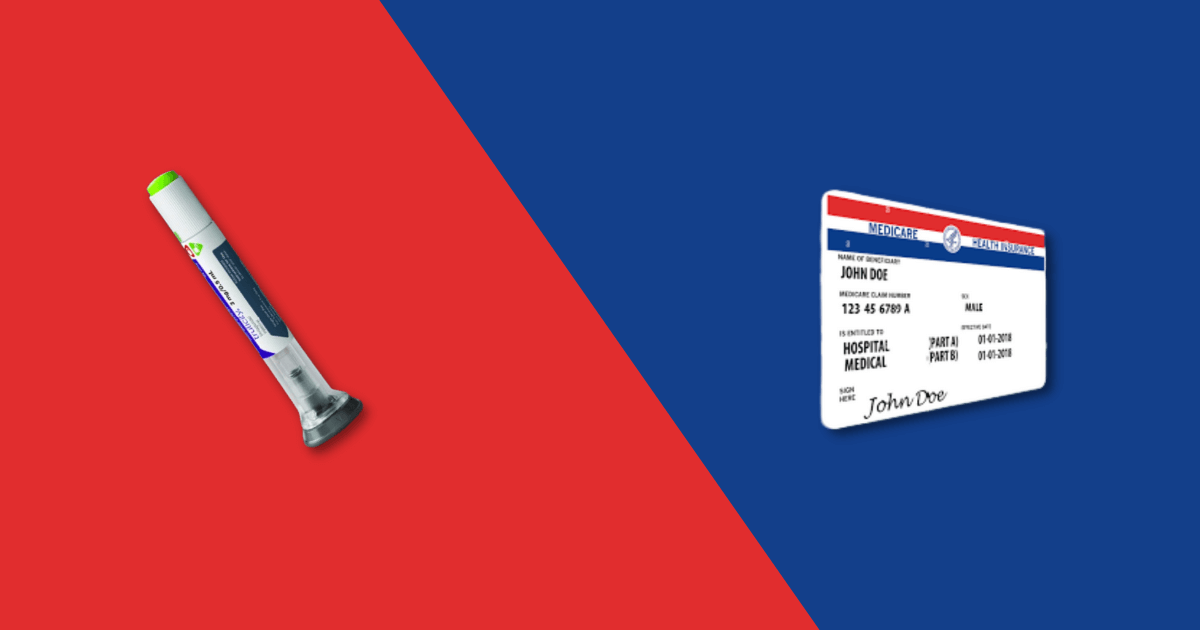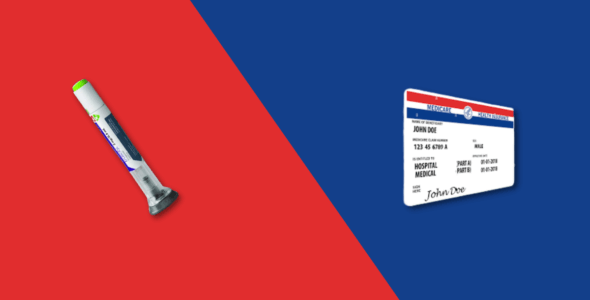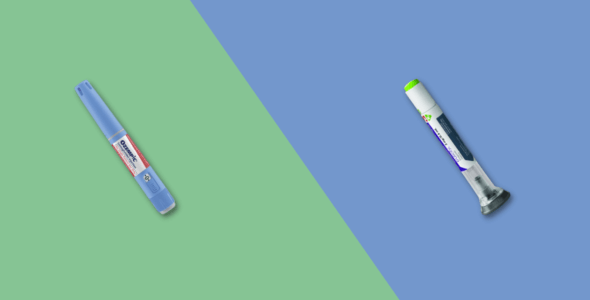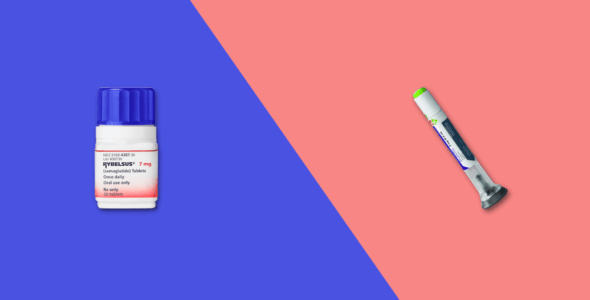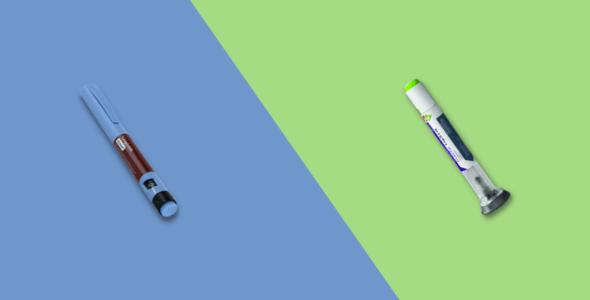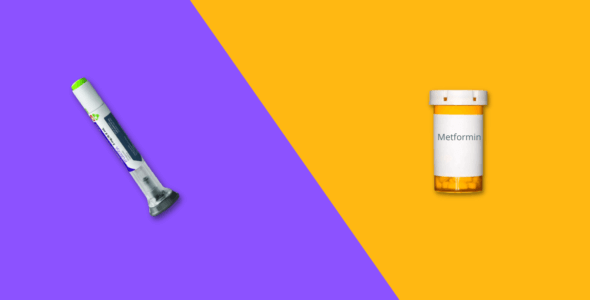How much does Trulicity cost with Medicare?
Table of contents
In 2022, the manufacturer’s (Lilly) website states that the list price of Trulicity is $886.36 per month without insurance. Around 70% of people who have prescription insurance through Medicare pay between $0-100 per month, and the remaining people pay an average of $207 per month, according to Lilly, the manufacturer of Trulicity. The manufacturer also states that some people with Medicare who qualify for Extra Help will expect to pay $4 to $9 for each Trulicity prescription.
The amount an individual pays for Trulicity depends on various factors such as:
- the type of Medicare coverage
- the formulary tier (list of covered drugs in the plan)
- whether the individual has reached their annual deductible amount
- coinsurance or copayments
What is Trulicity?
Trulicity (dulaglutide) is an FDA-approved, once-weekly injectable prescription medication used to improve blood sugar control in adults with type 2 diabetes. Trulicity is a non-insulin prescription medication that helps your body release the insulin that it is already making. It is not used to treat type 1 diabetes and is only used for the treatment of type 2 diabetes. It belongs to a class of drugs called glucagon-like peptide (GLP-1) receptor agonists. GLP-1 drugs stimulate the release of insulin in response to high blood sugar levels. They also slow the emptying of the stomach to help control hunger.
Trulicity is available in two strengths: 0.75 mg and 1.5 mg. It is injected under the skin (subcutaneously) with a pre-filled pen or syringe once weekly. The recommended starting dose is 0.75 mg once weekly for at least four weeks, after which it can be titrated up to the maximum dose of 1.5 mg per week based on blood sugar levels and other factors. It is important to note that Trulicity should always be taken once weekly on a fixed schedule, either at the same time each day or within the same hour each week.
Trulicity works by stimulating insulin release from the pancreas and inhibiting stomach emptying, which helps to keep blood sugar levels under control. In addition, Trulicity is associated with weight loss in some people. However, it is important to be aware that Trulicity can cause serious side effects such as low blood sugar (hypoglycemia) and pancreatitis. It is recommended to obtain medical advice from your healthcare provider about the side effects of this prescription medication.
Is there a generic of Trulicity?
There is currently no generic version of Trulicity available on the market. Diabetics who need Trulicity to treat their condition will need to purchase the brand-name drug, Trulicity.
What’s the cheapest way to get Trulicity?
The cheapest way to get Trulicity will vary depending on insurance coverage and the pharmacy you use. However, some tips to get Trulicity at a lower cost include using a mail-order pharmacy, using a pharmacy that offers discounts, and looking for coupons or manufacturer rebates.
Trulicity is covered by many health insurance plans, Medicaid, and Medicare prescription drug plans, however, the out-of-pocket costs may vary by plan.
You may be able to save money by switching to a Medicare Advantage Plan that offers prescription drug coverage, or by enrolling in a Medicare Part D prescription drug plan.
Some people with Medicare who qualify for Extra Help should expect to pay from $4 to $9 for their Trulicity prescription, according to the manufacturer, Lilly.
You may also try asking your healthcare provider about the possibility of receiving a sample pack of Trulicity from the manufacturer. This could help you decide if Trulicity is the right diabetes medication for you before committing to paying for a full month’s supply.
Trulicity prescription costs are high, but there are often ways to help reduce the cost of prescription medications. For additional information, talk to your healthcare provider about your options and compare costs between different pharmacies to find the best price.
Does Medicare cover Trulicity?
Medicare Part A (hospital insurance) does not cover Trulicity because it is not a hospital-administered medication.
Medicare Part B (medical insurance) does not cover Trulicity because it is considered an outpatient medication.
Medicare Part D plans (prescription drug plans) and Medicare Advantage plans with prescription drug coverage (MAPDs) may cover Trulicity. However, the coverage and costs will vary depending on your specific insurance plan. To learn more about whether Medicare covers Trulicity, talk to your healthcare provider or contact Medicare directly for more information concerning your Medicare Part D coverage. They can help you determine what level of coverage is available for this medication under your specific plan.
If an individual has Original Medicare and they would like coverage for Trulicity, they will need to enroll in a stand-alone Part D plan or a Medicare Advantage Prescription Drug (MAPD) plan that includes prescription drug coverage for Trulicity.
Medicare Part D plans and Trulicity coverage
Each Medicare plan has its own rules about how much it will cover for each type of drug in its formulary (list of covered drugs). Some plans may place Trulicity on a higher tier of their formulary (list of covered drugs), which means that patients will have to pay a higher coinsurance or copayment for the medication. Other plans may exempt Trulicity from the annual deductible amount.
If an individual has a Medicare Part D prescription drug plan or a Medicare Advantage Prescription Drug (MAPD) plan, they will likely pay a monthly premium, an annual deductible, and coinsurance or copayments for their Trulicity medication. The average monthly cost for a Medicare Part D prescription drug plan in 2022 is between $0-100 per month, and the remaining people pay an average of $207 per month, according to Lilly, the manufacturer of Trulicity. No Medicare drug plan may have a deductible of more than $480 in 2022 which means that you are responsible for the first $480 of out-of-pocket costs for your prescription drugs before your coverage commences.
Medicare Part D prescription drugs are the most common way of obtaining coverage from Medicare for prescription drugs such as Trulicity. If an individual has Medicare Part D, also called prescription drug coverage, they may be able to get Trulicity at a lower cost. Part D plans have a list of covered drugs (formulary drug list) and use tiered formularies. The cost of Trulicity depends on which tier the drug is placed in.
There are four tiers:
- Preferred or Generic (lower-cost drugs)
- Non-preferred or Brand-name (higher-cost drugs)
- Specialty (very high-cost drugs)
- Not Covered Drugs
Trulicity and Medicare Advantage
Medicare Advantage plans (Medicare Part C) are an alternative to the Original Medicare. If an individual has a Medicare Advantage plan that includes prescription drug coverage, they may be able to get Trulicity at a lower cost. Like with Part D plans, the cost of Trulicity will depend on which tier the drug is placed in and whether the individual has met their deductible. To see what your specific insurance plan covers, you can view your insurance plan’s formulary or contact your plan’s customer support department.
You can also compare Medicare Advantage plans that include prescription drug coverage on the Medicare website. When you compare plans, be sure to look at the total cost of the plan, not just the monthly premium. You should also consider whether the plan covers your preferred pharmacies and doctors.
Can Medigap plans help me save money on Trulicity?
No, Medicare Supplement Insurance (Medigap) cannot be used to help pay for prescription drugs. Medigap plans are supplemental insurance plans that can help cover some of the costs that Original Medicare does not cover, such as copayments, coinsurance, and deductibles. While Medigap plans cannot help with the cost of Trulicity specifically, they can help with some of the other costs associated with Medicare.
Get your Trulicity medication for only $49 per month
Get StartedHow much does Trulicity cost with Medicare?
The cost of Trulicity will vary depending on a number of factors, including insurance coverage and the pharmacy you use.
The manufacturer states that around 70% of people who have Medicare Part D pay between $0-100 per month, and the remaining people who have Medicare Part D pay an average of $207 per month. The manufacturer also states that some people with Medicare who qualify for Extra Help should expect to pay from $4 to $9 for their Trulicity prescription.
Trulicity assistance for Medicare patients
If you have Medicare and need help paying for Trulicity, there are a few options that may be able to help.
- With the Trulicity Savings Card, you may be eligible to pay as little as $25 for 12 Trulicity pens. To see if you qualify, visit the manufacturer’s website or speak with your doctor.
- Patient Assistance Programs (PAPs) are also available to help you pay for Trulicity.
- You may also be eligible for Extra Help. Extra Help is a program from the Social Security Administration that helps people with limited incomes and resources pay for their Medicare prescription drug costs. To see if you qualify for Extra Help, visit the Social Security Administration’s website or call 1-800-772-1213.
- If you cannot afford your medication, your doctor may be able to provide you with samples of Trulicity from the manufacturer.
Medically reviewed
A medical professional has reviewed this article.


Jamie Winn, PharmD
Jamie Winn, PharmD
Dr. Jamie Winn received his Doctor of Pharmacy in 2002 from the University of South Carolina College of Pharmacy, Columbia, SC. Jamie is a medical reviewer for NiceRx.

